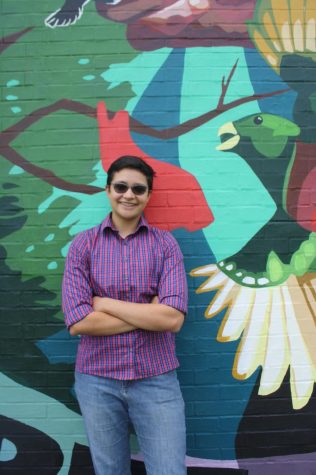Bomb threat and shooter report amplify differences between Twin Cities schools
Coffman Memorial Union, at the University of Minnesota, was the site of a bomb threat on September 21. The university’s response to the incident demonstrates the strength of their communication system, with a South PSEO student saying that “they sent out text messages and emails to everyone about the bomb threat.” Similar threats occurred the same day throughout Minnesota high schools, allowing students to compare the two school systems’ responses.
October 24, 2022
The beginning of the 2022 school year was marked by two threats to Twin Cities educational institutions – a bomb threat at the University of Minnesota’s Coffman Union, and an active shooter report at Minneapolis Washburn High School, which turned out to be false. Although incidents such as these can be jarring for students, they provide opportunities to examine the systems designed to keep schools safe. Students’ responses to these threats exemplify the differences between schools when it comes to security and communication.
On Wednesday, September 21, a man was arrested outside Coffman Memorial Union, at the University of Minnesota, after stating that he had a bomb. South senior Harri Rede, who takes PSEO classes at the U of M, saw the arrest taking place. Rede was walking near Coffman Union with friends when they noticed the police dragging off someone in handcuffs. Rede then described the university’s communication regarding the situation, saying that “Later… we looked at our emails and… got a SafeU alert saying ‘Bomb threat at the Coffman Union.’”
Another South PSEO student, senior Sam Clasen, also mentioned the SafeU alert when reflecting on his experience regarding the threat. Clasen said that “Every student at the U gets safety notifications when there’s events that happen on campus that might be unsafe… so they sent out text messages and emails to everyone about the bomb threat.” The SafeU system is used to communicate with university students about a wide variety of possible safety concerns and allows administrators to easily contact students who are spread across a large campus.
Also on Wednesday, September 21, local police received a call that there was an active shooter at Washburn, in southwest Minneapolis. The report was determined to be false, and is believed to be part of a “swatting” campaign, in which false reports are made in an attempt to provoke a police response. Schools in several other Minnesota cities also had false reports made on the same day. Although the bomb threat and the shooter report occurred on the same day, the events have been determined by law enforcement to be unrelated.
While students at the U of M, including those taking PSEO classes, received near-instant notice of the possible danger, a Washburn student stated that they were “Completely unaware of shooter threats until news got to it.” This reflects a general trend in the communication of security issues at Minneapolis Public Schools. When discussing the differences between the U and South, Clasen said that South sent out emails “With all the gun stuff that went on [last year], and it was obviously delayed so no one really knew.”
Incidents such as these have led MPS students to become more aware of and concerned about safety at school. Clasen said that he prefers the U system, and that “It feels probably a little safer… South could be quicker about things,” but acknowledged that “it’s hard, given what they have. The U has a lot more resources.” When asked if the threat has affected whether they feel safe on campus, Rede answered that “If I’m being honest, I’ve just kind of come to expect this from America.” Threats to schools have become increasingly ubiquitous in recent years, which has amplified the need for strong security systems. However, as Rede pointed out, this increase can also cause students to become desensitized to the school safety practices that are now commonplace. The events of September 21 give perspective on how schools can best respond to circumstances that may only become more frequent.







